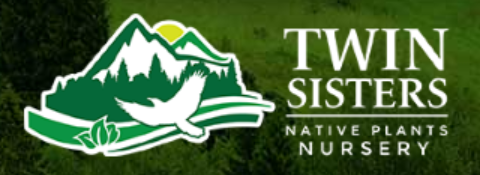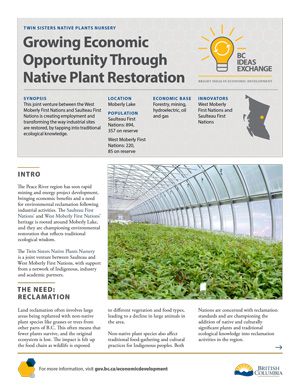Growing Economic Opportunity with Native Plant Restoration
Moberly Lake
The Peace River region has seen rapid mining and energy project development, bringing economic benefits and a need for environmental reclamation following industrial activities. The Saulteau First Nations’ and West Moberly First Nations’ heritage is rooted around Moberly Lake, and they are championing environmental restoration that reflects traditional ecological wisdom. The Twin Sisters Native Plants Nursery is a joint venture between Saulteau and West Moberly First Nations, with support from a network of Indigenous, industry and academic partners.
The Need: Reclamation
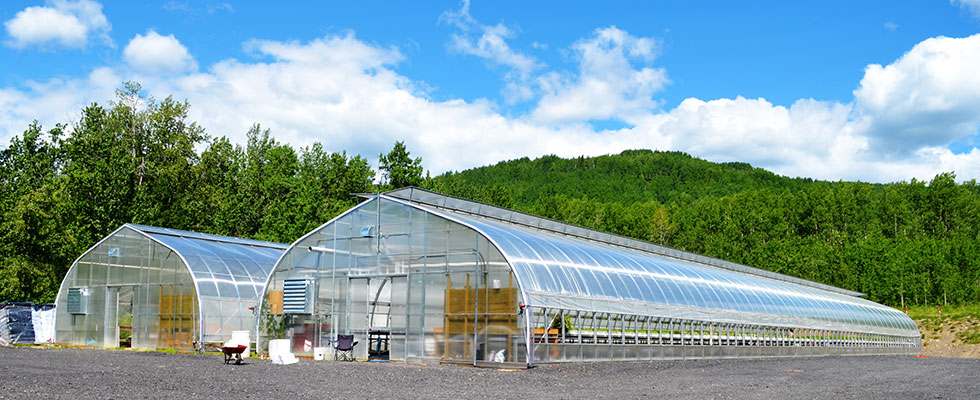
Land reclamation often involves large areas being replanted with non-native plant species like grasses or trees from other parts of B.C. This often means that fewer plants survive, and the original ecosystem is lost. The impact is felt up the food chain as wildlife is exposed to different vegetation and food types, leading to a decline in large animals in the area.
Non-native plant species also affect traditional food-gathering and cultural practices for Indigenous peoples. Both Nations are concerned with reclamation standards and are championing the addition of native and culturally significant plants and traditional ecological knowledge into reclamation activities in the region.
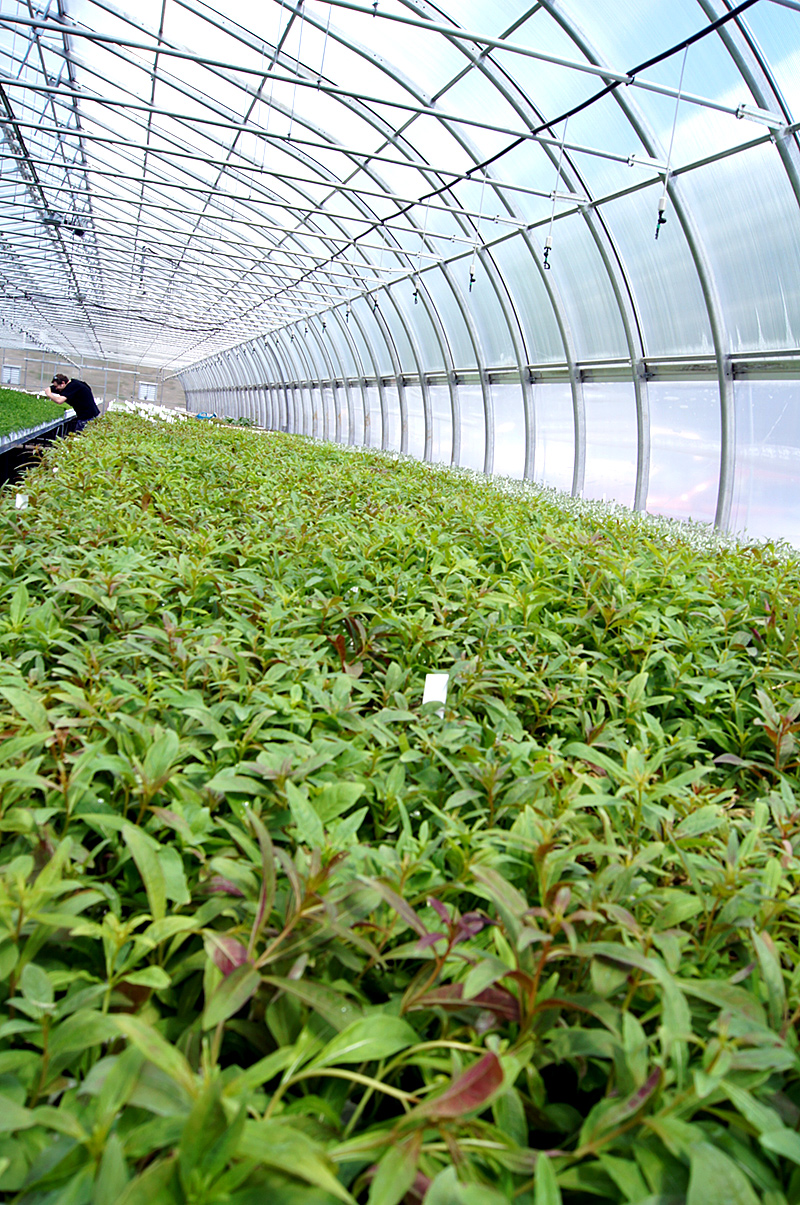
The Strategy
In 2011, a partnership was formed to develop a native plant nursery in the Peace River region. The initial partners were the Saulteau and West Moberly First Nations, Walter Energy Ltd., and Keefer Ecological Services. Following a feasibility study, two greenhouses were purchased and the Twin Sisters Native Plants Nursery, a jointly owned venture between the two First Nations, was incorporated. The name was inspired by the Twin Sisters Mountains, a spiritually significant location near the greenhouse site on the north side of Moberly Lake.
Having the physical and legal infrastructure in place was just the first step. Harvesting seeds and growing native plants indoors requires horticultural knowledge that was scarce among the region’s workforce. The collaborative network around the nursery grew wider as Royal Roads University, Ktunaxa First Nation, and Tipi Mountain Native Plant Nursery (near Cranbrook) joined the team to create the Growing Our Futures: Native Plant Horticultural Training Program.
Over the summer and fall of 2013, a pilot training program was delivered to Saulteau and West Moberly First Nations students. Funding came from the former Canadian Agricultural Adaptation Program, through the Investment Agricultural Foundation of BC (IAF-BC), the North East Native Advancing Society, Walter Energy, and Teck Resources. Cultural teachings and Elder instruction were important aspects of the training program, which took place alongside ethnobotanical research to identify plant species and document cultural uses of plants.
The first crop of native plants was propagated in 2013 and the initial commercial crop was produced in 2014. Among the first customers were BC Hydro, Pattern Energy (Meikle Wind project) and Conuma Coal.
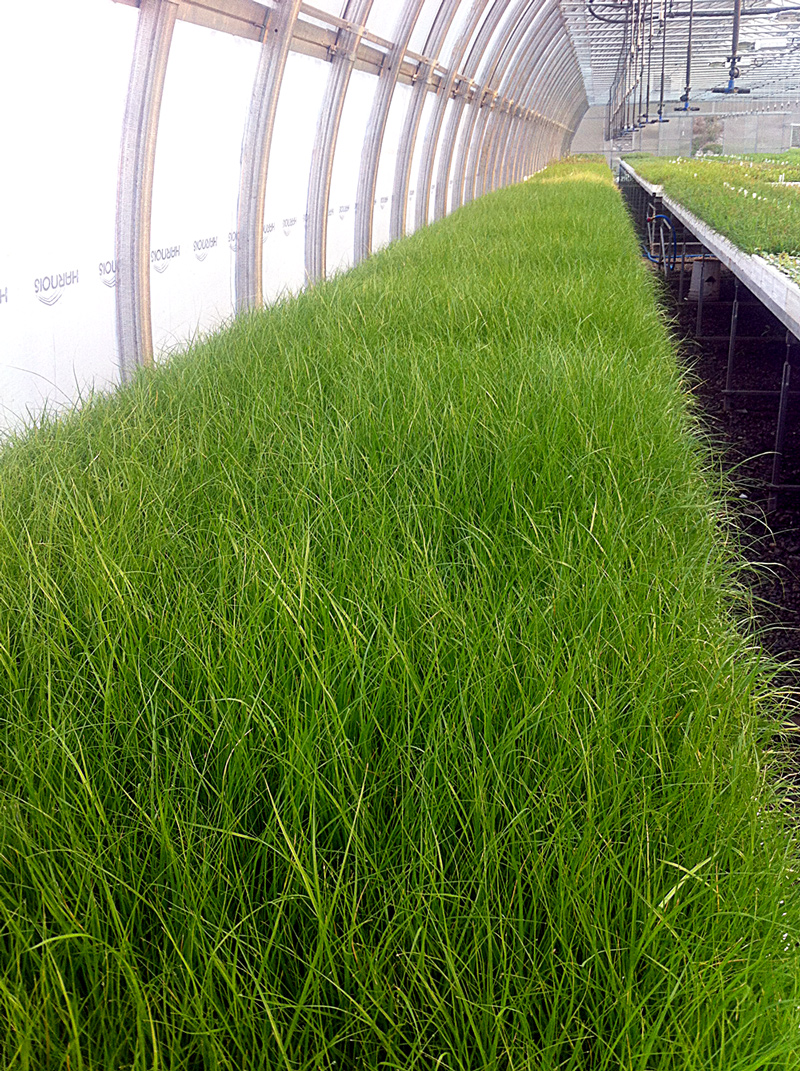
Successes
- Eight staff work at the nursery, swelling to about 24 workers seasonally when plants are being shipped. All employees, with the exception of the head grower, are members of the Saulteau and West Moberly First Nations communities.
- Initially, one greenhouse was used, but thanks to industry demand, a second greenhouse opened in 2017 and both are now at full capacity most of the time. Plans for a third greenhouse are being considered for the near future.
- Industry partners are working with Twin Sisters on new seed collection and propagation projects to better understand the ecosystem and collect seeds prior to disturbance. The goal is to more closely match an area’s plants during reclamation.
- Both Nations are also starting up Twin Sisters Restoration to do the on-site reclamation work, using plants grown at the nursery, to create more jobs for their members.
- In October 2017, Twin Sisters Native Plants Nursery won the Aboriginal Business Partnership of the Year award at the B.C. Aboriginal Business Awards.
Lessons Learned
- Have a partner with deep pockets: greenhouse operations are expensive! An initial $30,000 project turned into a $1.4-million horticultural business, and Walter Energy was a vital funding partner.
- This partnership between West Moberly and Saulteau First Nations demonstrates that doing things together makes it less draining and more successful for both partners. Running a business with family can be a challenge, but it is very rewarding when you make it work. The management structure of each band is different, but Twin Sisters is proof that collaboration is possible.
- It is possible to create economic opportunities that serve cultural and social objectives: through this initiative, Elders and young people from both Nations were able to reconnect with the land, rekindling traditional knowledge in their communities.
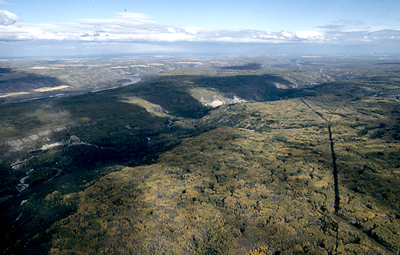
Moberly Lake
Region: Northeast
Population:
Saulteau First Nations:
894, of which 357 live on reserve
West Moberly First Nations:
220, of which 85 live on reserve
Economic Base: Forestry, mining, hydroelectric, oil and gas
The Saulteau First Nations and West Moberly First Nations established the Twin Sisters Native Plants Nursery at Moberly Lake, B.C. in 2012 with a goal of being a leader in native plant propagation and distribution in the province.

